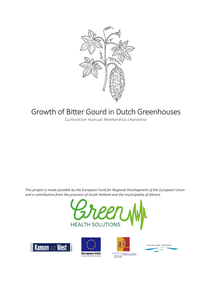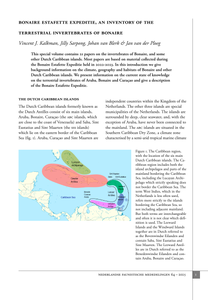Tomato varieties used at present for commercial production in Dutch glasshouses have a high density of glandular trichomes on the stem, but a very low density on the leaves. The two-spotted spider mite, Tetranychus urticae Koch, and the predatory mite, Phytoseiulus persimilis Athias-Henriot, usually disperse from leaf to leaf via the stem, thereby incurring high risks of entrapment (and death) in the exudate of the glandular trichomes. These risks have been quantified on the tomato cv. 'Turbo' and an accession of Lycopersicon peruvianum almost free of glandular trichomes. The possible consequences for biological control are discussed and new perspectives for predator release strategies and for plant breeding are considered. © 1987 Elsevier Science Publishers B.V.
DOCUMENT
Bitter gourd is also called sopropo, balsam-pear, karela or bitter melon and is a member of the cucumber family (Cucurbitaceae). It is a monoecious, annual, fast-growing and herbaceous creeping plant. The wrinkled fruit of the bitter gourd is consumed as a vegetable and medicine in Asia, East Africa, South America and India. The aim of this bitter gourd cultivation manual is to make this cultivation accessible to Dutch growers and in this way be able to meet market demand. In addition, this cultivation manual aims to provide insight into the standardized production of the medicinal ingredients in the fruit.
DOCUMENT

This special volume contains 21 papers on the invertebrates of Bonaire, and someother Dutch Caribbean islands. Most papers are based on material collected during the Bonaire Estafette Expeditie held in 2022-2023. In this introduction we give background information on the climate, geography and habitats of Bonaire and other Dutch Caribbean islands. We present information on the current state of knowledge on the terrestrial invertebrates of Aruba, Bonaire and Curaçao and give a description of the Bonaire Estafette Expeditie.
DOCUMENT
